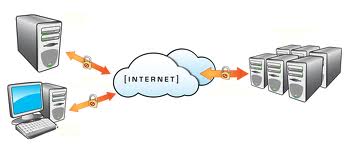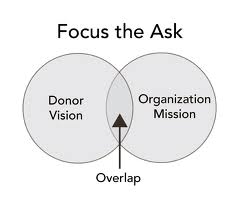 Welcome to O.D. Fridays at DonorDreams blog. Every Friday for the foreseeable future we will be looking more closely at a recent post from John Greco’s blog called “johnponders ~ about life at work, mostly” and applying his organizational development messages to the non-profit community.
Welcome to O.D. Fridays at DonorDreams blog. Every Friday for the foreseeable future we will be looking more closely at a recent post from John Greco’s blog called “johnponders ~ about life at work, mostly” and applying his organizational development messages to the non-profit community.
Today, we’re focusing on a post that John titled “X the Concerns“. In that post, he talks about a person’s circle of concern versus their circle of influence. More importantly, he speaks to the impact of focusing on things outside of your circle of influence and the consequences that come with that behavior.
“When we focus on things that we really can’t do anything about, we are actually expending valuable time and energy that could have been used to work on those things that are inside your circle of influence, those concerns that you really could do something about.”
I see executive directors and fundraising professionals get paralyzed by this all the time. Non-profit organizations are so under-resourced, and everyone is wearing too many hats. So, when you don’t have a clear understanding of what is inside your circle of influence and what isn’t, then things seems to get worse.
Here is a short list of things I’ve seen many of my non-profit friends worrying about recently:
- Will the economy double dip?
- How much of a cut in city funding will we have to take?
- Will Mr. & Mrs. John Donor renew their contribution this year?
- Will the State of Illinois pays its bills this month or will my accounts receivable line grow a little larger?
If you go through the exercise that John suggests in his post “X the Concerns,” some of you might put all of these things outside of your circle of influence. After all, you have no control over whether or not a donor writes a check to you this year. You can’t control the dysfunctional and broke State of Illinois. City staff and council members are going to do what they are going to do when it comes to allocation of funding.
 Right?
Right?
Well, I say “not so fast!”
The difference that I see between very high functioning non-profit professionals and people who struggle with working in this sector is that the high functioning individuals KNOW what they have influence over, and they focus on it like a laser.
Take the example of Mr. & Mrs. John Donor. It is true that you cannot make someone donate to your organization; however, it is a mistake to put this outside of your circle of influence. Doing so dramatically increases the odds that you won’t secure that contribution. However, placing this donor inside of your circle of influence means investing time and resources in cultivation and stewardship activities. In the end, you can’t force them to sign that pledge form, but you are able to greatly increase your odds by not leaving things like that to chance.
Great leaders have this instinctive ability to KNOW what is inside their circle of influence even when at first blush it seems to be outside.
So, what should you do if you lack that instinct? Does that mean you are ill-suited to be a non-profit executive director or fundraising professional?
Maybe?
If you are smart and figure out how to overcome this obstacle, then you are well on your way towards being an effective leader who doesn’t get paralyzed by things that you can’t control and who doesn’t succumb to fatalistic impulses that undermine your efforts.
Those who I’ve seen “figure it out” have done so by embracing collaboration. They engage a wider group of people in answering the question “What is inside our circle of influence?” and “What should we do?” I’ve also seen these individuals invest in executive coaching services to help find perspective and question their instincts.
Again, if you haven’t read John’s post “X the Concerns,” then click over and do it now. Go through the exercise. Afterward, take a step back and re-evaluate by asking: “Are there things that I initially put outside of my circle of influence that might belong inside? If so, what should I do about that?”
Are you paralyzed about things that you have no control over? What do you do to get unstuck? How do you KNOW that everything you place outside of your circle of influence really belongs there? Please share some of your thoughts in the comment box below because we can all learn from each other.
Here’s to your health!
Here’s to your health!
Erik Anderson
Founder & President, The Healthy Non-Profit LLC
www.thehealthynonprofit.com
erik@thehealthynonprofit.com
http://twitter.com/#!/eanderson847
http://www.facebook.com/eanderson847
http://www.linkedin.com/in/erikanderson847
 It is that time of the year when Giving USA releases its findings on how well (or not so well) the charitable giving sector did in the previous year. After adjusting for inflation, the experts tell us that charitable giving rose less than one percent in 2011, and individual giving did about the same.
It is that time of the year when Giving USA releases its findings on how well (or not so well) the charitable giving sector did in the previous year. After adjusting for inflation, the experts tell us that charitable giving rose less than one percent in 2011, and individual giving did about the same.























